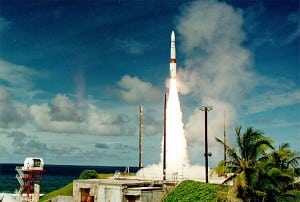
The Missile Defense Agency (MDA) Tuesday chose industry teams led by Lockheed Martin [LMT] and Northrop Grumman [NOC] for initial technology development and risk reduction contracts for the Next Generation Interceptor (NGI) over incumbent Boeing [BA]. The NGI program aims to replace the cancelled Redesigned Kill Vehicle (RKV) program that was scrapped due to significant technical issues leading to schedule and cost increases. Boeing previously served as the prime contractor on RKV, working alongside Raytheon Technologies [RTX] as subcontractor to…

 By
By 











